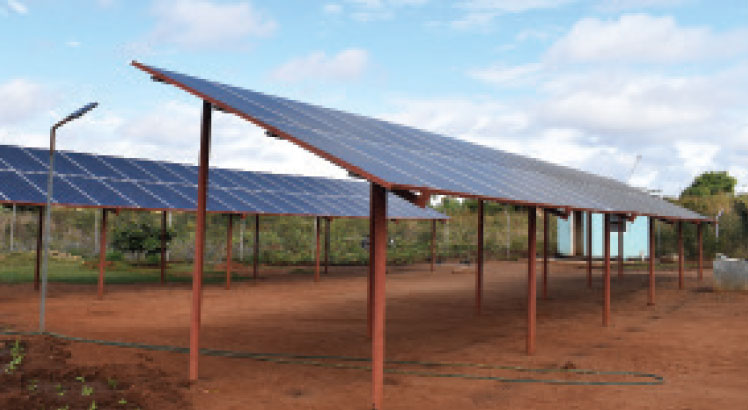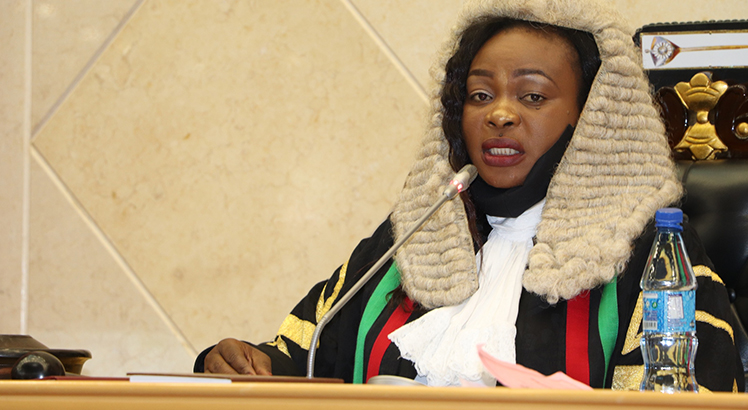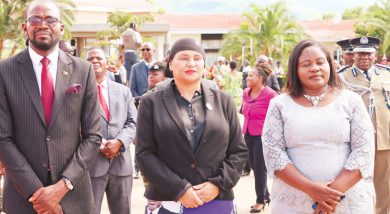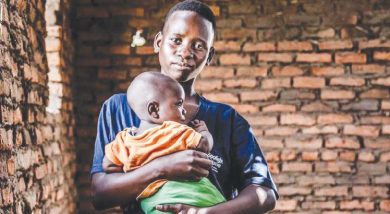Lirangwe waves bye to erratic water supply
Lirangwe is an emerging trading centre nearly 30 kilometres north of Blantyre City.
From their drawing boards in the commercial capital, town planners point towards the bustling market for the city’s expansion.
However, the rural business hotspot has been stunted by water woes.
Says restaurant owner Elesi Khembo, 35: “Intermittent water was a huge problem frustrating both residents and visitors, who buy from us.”
The mother of four says the problem worsened in the dry season when taps dried for up to 12 hours.
“Water is almost everything to my food business,” she states. “Any hiccups affect sanitation and hygiene, putting off customers who risk catching preventable diseases from contaminated food, plates and cups.”

electricity for pumping water
Khembo is excited that the nightmare days persist no more.
The out-of-town population waved goodbye to dry taps in September 2021 when they switched to a new solar-powered water supply system.
This is part of the Malawi Drought Resilient Project funded by the World Bank through the Ministry of Water and Sanitation.
Two solar farms noiselessly turn sunlight into electricity for pumping groundwater into a massive hilltop reservoir.
“Since the new system started working, water problems are gone,” says Alice Mpewe, from Lirangwe Water Users Association (WUA). “Our customers no longer complain as their taps run all day.”
The old electric pumps were frequently disrupted by persistent blackouts that haunt Malawi’s grid.
“In our drought-prone area, taps used to run dry every time blackouts occurred. Since we switched to solar-powered pumps, this has become history. After all, the area enjoys abundant sunshine,” she states, smilingly.
The association now supplies 168 more households, institutions and businesses.
“The count of connections has risen from 580 to 748 since the switch. Looking forward, we can connect 50 000 in 10 years,” she brags.
The WUA no longer worries about electricity bills. As electricity costs shrink, its earnings are rising.
“Since the upgrade, our revenue has risen by over 30 percent from K3 million to K4 million. This is good news because power bills that once ate into our profits have fallen,” she says.
This excites John Chingawale, the principal water engineer in the Ministry of Water and Irrigation.
He sees systems powered by renewable energy accelerating the country’s progress to achieve the global sustainable development goals to deliver safe water, sanitation and hygiene by 2030.
“Solar energy has proved to be a game changer in the way water users’ associations supply rural areas because the areas, where the majority of our population live, enjoy the abundant sunshine and this is free energy,” he explains.
The 2018 census shows 84 in every 100 people in the country live in rural areas.
WUAs are to this rural majority what five water boards are to cities and towns.
The main suppliers of potable water are increasingly switching to solar energy to beat electricity costs and blackouts.
“These days, even water boards are no longer heavily relying on hydropower. This way, they are increasing their profits while shedding electricity bills,” Chingawale explains.
Just like that, taping groundwater using clean and renewable energy from sunlight helps make power supply plants resilient to drought and prolonged dry spells.
Away from Lirangwe, the project has installed similar water supply systems in Dedza, Ntcheu, Ntchisi, Salima, Balaka, Mwanza, Neno and Chikwawa.
Khembo states: “For me, consistent water supply means big business. Currently, my customers are confident that they are eating hygienic meals and drinking safe water. The restaurant and utensils are always clean, so no one worries about the risk of waterborne and sanitation diseases.”





